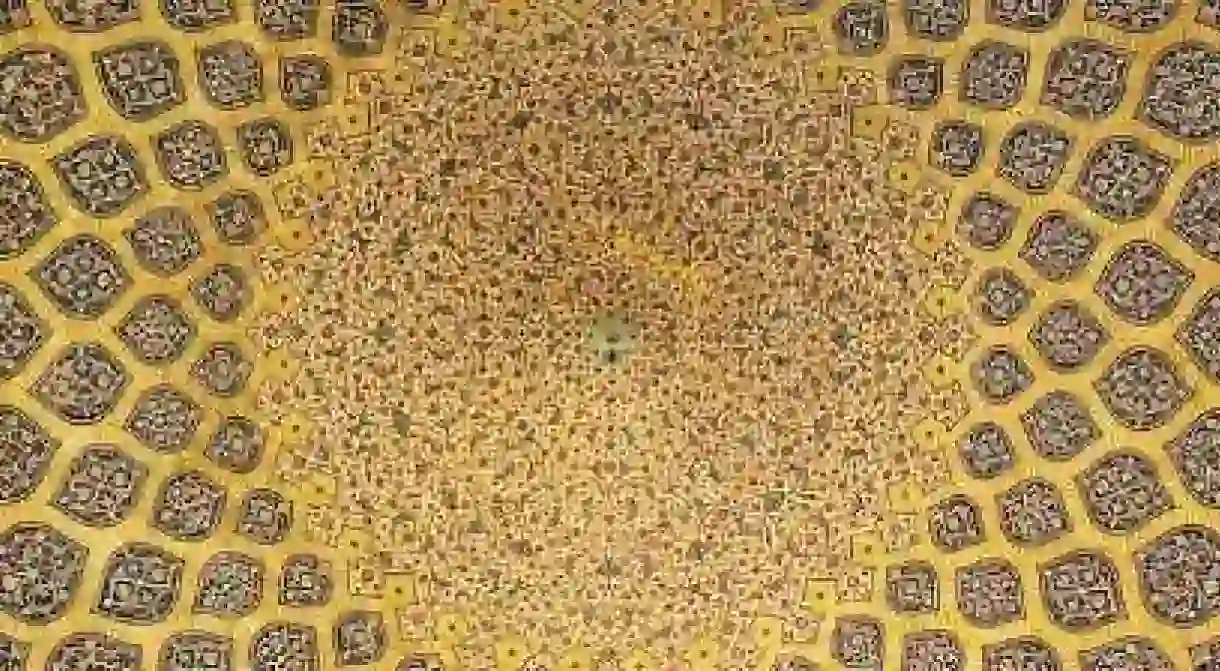The Top 10 Things To Do And See In Esfahan

On the tip of every Esfahani’s tongue is an old Persian proverb: Esfahan nesf-e jahan – Esfahan is half the world. Once the magnificent capital of Shah Abbas’s Safavid Empire, Esfahan is brimming with historic delights, some of which date back to pre-Islamic Iran. Here we explore the best things to do and see there.

Imam Mosque
Mosque

Naqsh-e Jahan Square (also known as Imam Square) is the overwhelmingly impressive central attraction of Esfahan, which features a number of architectural wonders. At the southern edge of the square, which stretches over half a kilometre in length, is the Imam Mosque (or Shah Mosque). Completed in 1629, the UNESCO world heritage site is arguably the premier example of Iran’s Islamic architecture. Intricate blue-tiled mosaics, splendid Quranic calligraphy, glittering iwans, towering yet delicate minarets, perfectly geometrical floral motifs – the dazzling aesthetic unity of this structural masterpiece is widely regarded as one of the most beautiful mosques in the world.
Sheikh Lotfollah Mosque
Mosque

Along the eastern side of Naqsh-e Jahan Square is the no less inspiring Sheikh Lotfollah Mosque. Finished ten years earlier than the more substantive Imam Mosque, Sheikh Lotfollah is notable for its golden-creamy tile work and complex arabesques, not to mention the imposing central dome – mesmerising from both the inside and out. Unusually lacking in minarets, the mosque was originally intended for private use by members of the royal court, and was designed by Sheikh Bahai during the reign of Shah Abbas.
Ali Qapu Palace
Building, Mosque
Opposite the Sheikh Lotfollah Mosque is the towering, six-storey Ali Qapu palace, a royal residence used by Shah Abbas to host visiting dignitaries. Completed at the end of the 16th century, it houses various paintings and frescoes, and the columned terrace boasts exceptional views of the square and its mosques. Depicted on the reverse side of 20,000 Rial banknotes, the palace is a national treasure, although much of the building fell into disrepair under subsequent ruling dynasties. The sixth-floor music room is a particular highlight for the wonderful shapes cut into the walls and ceiling. Interior of Ali Qapu | © Hamed Saber/Flickr
Chehel Sotun Palace
Museum
Chehel Sotun, meaning “40 columns”, is another surviving Safavid-era palace which now functions as a museum. The twenty slender wooden columns at the front of the palace double in number when reflected in the long fountain (hence the name), and are surrounded by well-maintained gardens. The interior is filled with magnificent frescoes depicting scenes from Safavid court life. Look out for the moustachioed Shah Abbas playing host to a fabulous royal banquet. Chehel Sotun Palace | © Arad Mojtahedi/Wikicommons
Grand Bazaar
Bazaar, Building
The main entrance to Esfahan’s Grand Bazaar is along the northern edge of Naqsh-e Jahan Square at what’s called the Qeysarieh Portal (check out the quaint teashop up the stairs to the left). The Bazaar is a higgledy-piggledy collection of alleys, caravanserais, and madrasehs, with light-holes punctuating the domed, high ceilings. Most of the bazaar was developed in Shah Abbas’ 17th-century building frenzy, although some parts are far older. From touristy knick-knacks to the finest Persian carpets, this bazaar has it all.
Si o Seh Bridge + Teahouse
Bridge, Building
Si o Seh – literally meaning “33” – Bridge is so named due to its 33 arches that stretch across the Zayandeh River. Built at the turn of the 17th century, the bridge extends to nearly 300 metres in length, making it the longest bridge in the city. Beautifully symmetrical, and especially atmospheric when lit up at night, Si o Seh Bridge is one of Esfahan’s most recognisable landmarks and a fine example of Safavid bridge-building. The adjacent teahouse is one of the only ones left along the river and well worth a visit. Si o Seh Bridge | ©Reza Haji-pour/Wikicommons
Jameh Mosque
Bazaar, Mosque
Dating back to the 8th Century, the Jameh Mosque has undergone numerous remodelling and renovations over the centuries, making it an eclectic mix of Islamic architecture, featuring contributions from the Seljuks, Mongols, and Safavids. Located to the north of the Grand Bazaar, the two Seljuk brick domes are arguably the mosque’s most celebrated aspect, although the entire complex – replete with a glazed tile work and ornate motifs – is a delight to behold.
Vank Cathedral
Cathedral, Church, Memorial, Museum
In the early 17th century, hundreds of thousands of Christian Armenians from northwest Iran were resettled in Esfahan by Shah Abbas – Vank Cathedral is the most impressive of their subsequently constructed places of worship. The outside of the cathedral is fairly plain, yellowy-brown brickwork. By contrast, the inside boasts elaborate and colourful frescoes, containing some disturbing depictions of the terrors of hell. There is also a fascinating museum (which displays Shah Abbas’ original edict establishing the new Armenian town), and a memorial to the Armenian Genocide. Vank Cathedral interior| ©Thomas/Wikicommons
Zoroastrian Ateshkadeh
This Sassanian-era Zoroastrian fire temple is located on a hillside just a few kilometres to the west of Esfahan. A short climb will be rewarded with an excellent panorama of the city and the river, and the crumbling remains are a poignant testament to Esfahan’s lengthy and turbulent history. Early morning climbs are particularly recommended for a moment or two of serene contemplation.
Sofeh Mountain
Just outside of the city is Sofeh Mountain – an area of outstanding natural beauty that promises clean air and spectacular views of the city. You can reach its summit either through hiking (it will take you around an hour) or via telecabin. Snowcapped in the winter, scorching in the summer, Sofeh is an excellent spot for outdoors recreation if you need a break from the commotion of the city.













